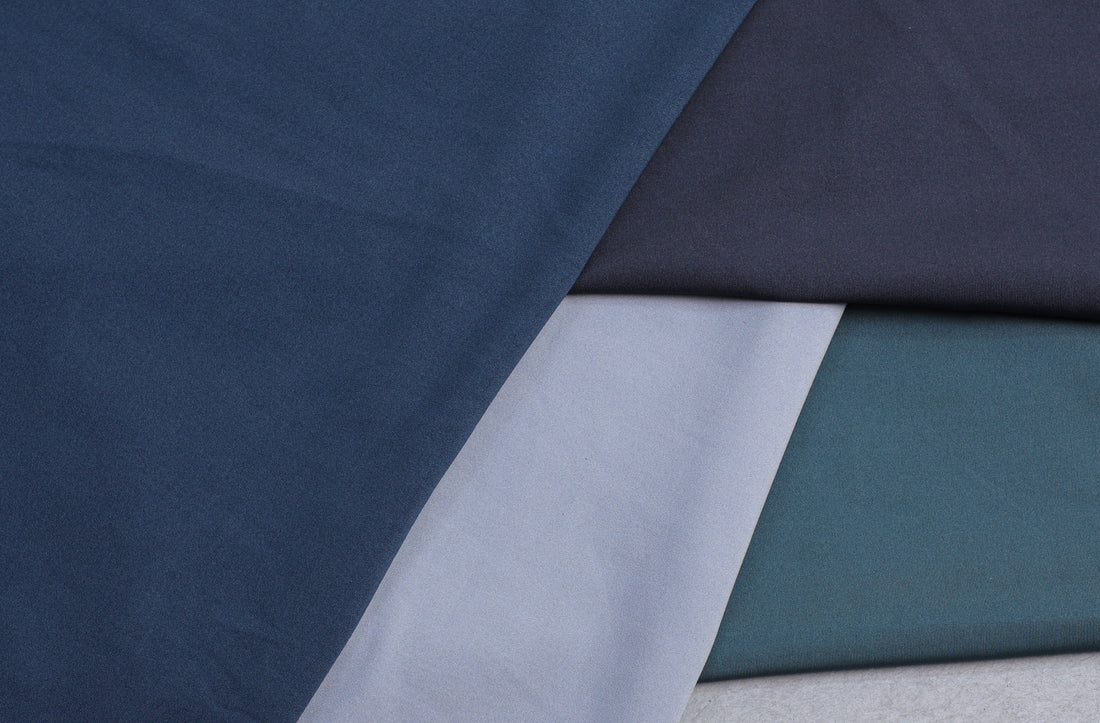
Polyester Crepe Fabric
Share
Polyester crepe fabric is a popular textile known for its unique texture, durability, and versatility. It’s commonly used in a variety of fashion applications and is often appreciated for its stylish appearance, ease of care, and range of uses. Here's an outline of what a blog about polyester crepe fabric might cover:
1. What is Polyester Crepe Fabric?
Polyester crepe fabric is made from polyester fibers, which are known for their strength, resilience, and moisture-wicking properties. The term "crepe" refers to the fabric's textured surface, which is typically achieved through a weaving technique that creates a crinkled or pebble-like surface. This texture can vary in its intensity, from light, subtle crinkling to more pronounced, heavy crepe.
2. Characteristics of Polyester Crepe
- Texture: The hallmark of polyester crepe is its unique, slightly crinkled texture. This can vary from smooth and subtle to more pronounced crepe-like, offering a rich feel.
- Durability: Polyester is a strong and durable fiber, meaning that polyester crepe fabric is long-lasting and can withstand everyday wear and tear.
- Wrinkle Resistance: One of the most notable benefits of polyester crepe is its wrinkle resistance. Unlike natural fibers like cotton or silk, polyester crepe maintains its shape and appearance with minimal need for ironing.
- Breathability: While polyester is a synthetic material, modern polyester crepe fabrics can be designed to be breathable and moisture-wicking, making it comfortable to wear in various climates.
-
Easy Care: Polyester crepe is typically machine washable and doesn’t require the same level of delicate handling as silk crepe or other natural fibers.

- Color Retention: Polyester fabrics tend to retain color well over time, which means polyester crepe stays vibrant after multiple washes.
3. Uses of Polyester Crepe Fabric
Polyester crepe fabric is highly versatile and used in a variety of applications, especially in the fashion and home décor industries:
- Clothing: It is commonly used to create dresses, blouses, skirts, pants, and jackets. Its slightly textured look adds an elegant touch to formal wear and evening attire. Polyester crepe is often used for professional attire due to its sleek and sophisticated appearance.
- Evening Wear: Many evening gowns and cocktail dresses are made from polyester crepe because of its smooth drape and luxurious feel, without the high maintenance associated with silk.
- Suits and Jackets: The fabric’s durability and professional appearance make it a popular choice for women’s business suits and blazers.
- Lining Fabric: Its smooth surface also makes it an excellent choice for lining other fabrics, ensuring that the garment feels comfortable against the skin.
- Home Décor: Polyester crepe is sometimes used in home textiles like curtains, tablecloths, or upholstery due to its texture and easy maintenance.
4. Advantages of Polyester Crepe Fabric
- Affordability: One of the main advantages of polyester crepe over its natural fiber counterparts (like silk crepe) is the cost. It offers a similar aesthetic but at a fraction of the price.
- Low Maintenance: The fabric requires less effort to maintain. It is less likely to stain, shrink, or wrinkle, making it highly practical for everyday wear.
- All-Weather Fabric: Polyester crepe can be used for both warm and cool seasons, depending on its weave and weight. Lighter versions are ideal for summer, while heavier versions work well in cooler months.
5. Drawbacks of Polyester Crepe Fabric
- Environmental Impact: Polyester is a synthetic fabric made from petroleum-based resources, making it less eco-friendly compared to natural fibers like cotton or wool. However, recycled polyester is a growing alternative that helps mitigate environmental impact.
- Less Breathable Than Natural Fibers: While it’s designed to be breathable, polyester crepe may still not be as airy or comfortable as natural fibers like cotton, especially in extreme heat.
- Static Cling: Polyester crepe can sometimes attract static electricity, which may cause clinginess, especially in dry weather conditions.
6. How to Care for Polyester Crepe Fabric
- Washing: Polyester crepe can typically be machine-washed, but it is always advisable to check the care instructions on the label. Wash it on a gentle cycle to preserve its texture.
- Drying: Tumble drying on low heat or air drying is usually best to avoid potential damage. Avoid over-drying to maintain the fabric's integrity.
- Ironing: Polyester crepe is generally resistant to wrinkles, but if necessary, use a low heat setting on your iron or a steamer to smooth out any wrinkles.
- Storage: Hang garments made from polyester crepe to preserve their shape and prevent wrinkles. If folding, ensure they are stored in a cool, dry place.
7. Popular Brands and Designers Using Polyester Crepe
Many fashion designers and brands have incorporated polyester crepe fabric into their collections due to its luxurious appearance and practicality. Well-known brands that have featured polyester crepe in their lines include high-street fashion designers as well as luxury houses offering more affordable options for those seeking sophisticated designs.
8. Polyester Crepe vs. Other Crepe Fabrics
- Polyester Crepe vs. Silk Crepe: Silk crepe is a more luxurious and delicate fabric, but it requires more care and is much more expensive. Polyester crepe offers similar texture and appearance at a lower cost and with less maintenance.
- Polyester Crepe vs. Rayon Crepe: Rayon crepe has a similar texture to polyester crepe but is made from plant-based fibers. It may not be as durable or low-maintenance as polyester but offers a softer, more breathable feel.
9. Conclusion
Polyester crepe fabric is a great choice for those looking for an affordable, durable, and stylish option for both clothing and home décor. It combines the elegant appearance of traditional crepe with the practicality of synthetic fibers, making it a popular choice for everyday wear, special occasions, and professional attire. With its minimal upkeep requirements, this fabric remains a go-to for designers and consumers alike.
